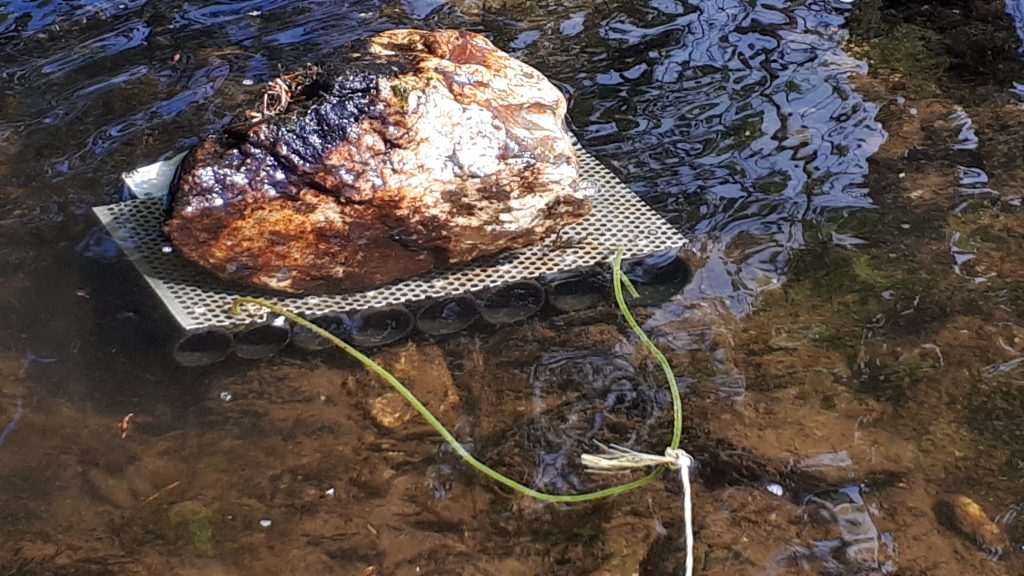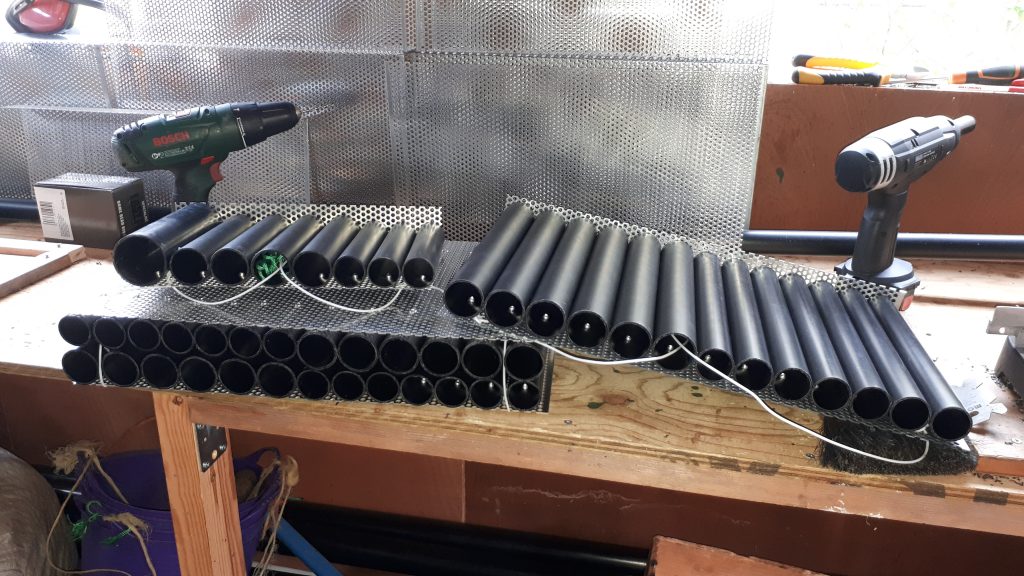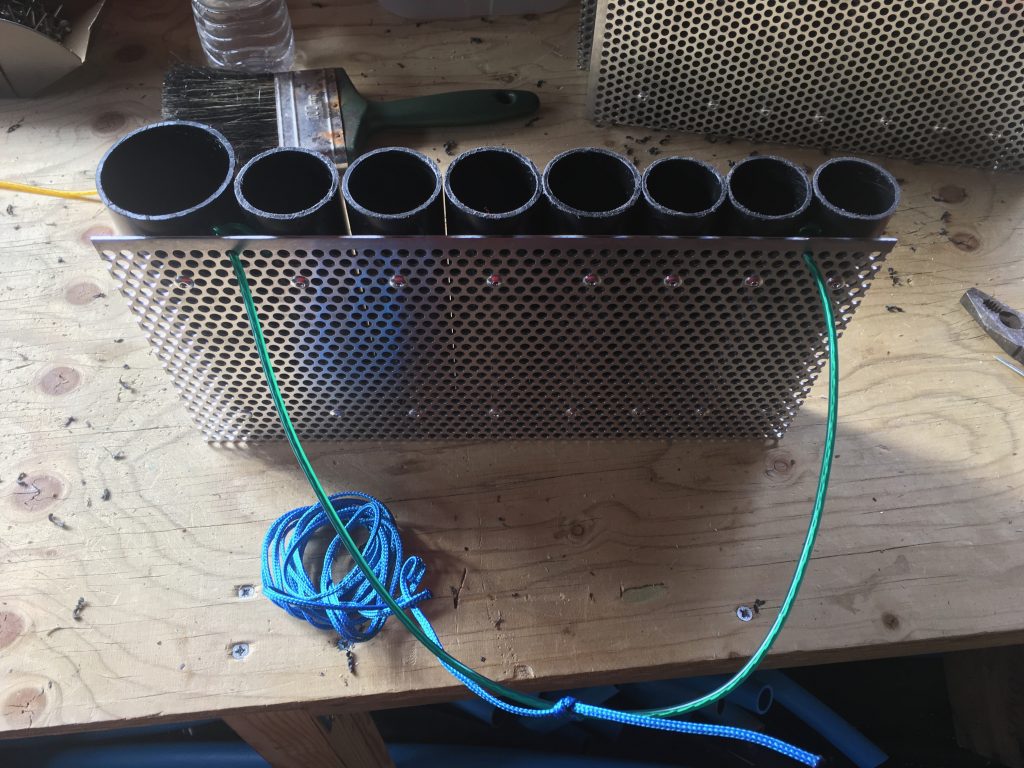Artificial Refuge Traps were originally developed by the Hampshire EA, and since 2004 they have been my “go to” technique for crayfish surveys and monitoring. I have also been successful at reducing numbers of signal crayfish on Exmoor using ARTs. I started manufacturing ARTs in 2006 for my own projects, then selling to other practitioners as the word spread.

The design has been refined over the years to make the trap robust, hard wearing, lightweight and cost effective. The standard ART is designed to catch a wide range of sizes of both native and non-native crayfish. I’m also trialling new designs of ARTs – higher capacity for control projects, targeted juvenile traps and those suitable for use in deep, large waterbodies.

So what is an Artificial Refuge Trap? It’s a habitat mimic, a series of pipes providing refuges similar to the burrows and crevices that crayfish utilise in the wild. Technically they are not a ‘trap’ as the animals can escape at any time, therefore they don’t need emptying every 24 hours. but they still need consent from the Environment Agency and any non-native crayfish captured must be despatched bankside – it’s illegal to transport them alive.

ART’s have several advantages over conventional ‘trappy’ style baited traps: –
- Baited traps tend to be biased towards large adults, particularly males. Removal trapping using this method often fails to reduce crayfish numbers as the loss of large adults reduces competition and cannibalism, allowing more of the smaller animals to reach adulthood. ARTs are not biased and have been found to catch a wide range of crayfish sizes, from juveniles to the largest individuals.
- Baited traps can sometimes catch non-target species such as otters and water-voles. Because ARTs are not a ‘trap’ there is no risk to non-target species.
- Because conventional baited traps are enclosed they must be checked at least once every 24 hours in the UK. ARTs can be left in situ for weeks or even months between checks which makes their use very cost-effective. I once (inadvertently) left one in a river for six years!
- Baited traps are often ineffective in river situations, especially when monitoring low density native crayfish populations. One reason why I found ARTs so useful back in 2006 was because they were the only method that could reliably detect white-clawed crayfish in Devon rivers where they are at very low density.
I compared ART’s to funnel traps as part of my PhD research and found that ARTs caught 87% of total crayfish, 95% of berried females and 89% of moulting individuals with an equal sex ratio and far wider size range than funnel traps (read more here).
Types of ART
All ARTs are constructed of plastic pipe (we used recycled where possible) riveted to a perforated alloy frame, allowing for the dispersal of silt from the tubes. The carry handle is made from durable plastic coated steel wire. Guidance on how to use ARTs can be downloaded here, please contact me for more information and to order.
- Standard ART – The original, lightweight 300m x 170mm with eight tubes 32mm – 50mm diameter. Suitable for capturing a range of sizes in small streams to medium sized rivers and shallow (< 5m) ponds/lakes.

- The XL – A larger version of the ART, 410mm x 300mm with thirteen 32mm and 40mm tubes for higher catches. The heavier weight makes it suitable for most habitats including deeper stillwaters and slow, deep rivers.
